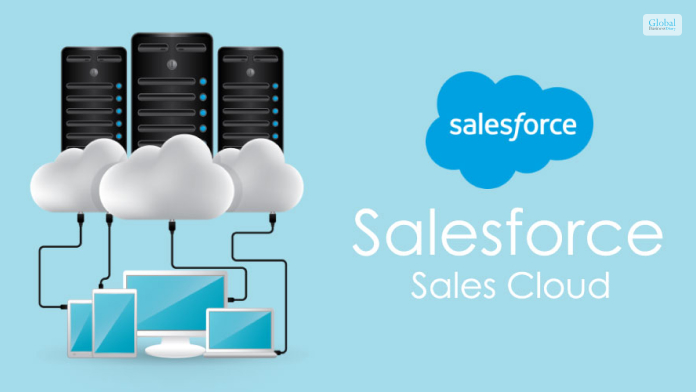8 Tips For Optimizing Your Salesforce CRM

Salesforce is the undisputed leader in CRM, providing a flexible platform for companies to unify sales, marketing, customer service, and more. However, the real power comes from customizing Salesforce to match your organization’s unique processes, workflows, and objectives.
Out-of-the-box Salesforce works well for general use cases. But optimizing the CRM for your specific needs is how you get the most value from the investment. In this comprehensive guide, we’ll explore 8 key tips to optimize your Salesforce implementation along with actionable strategies under each:
Tip 1: Configure Salesforce Around Your Existing Business Process
Don’t make the mistake of disrupting your proven processes to match default Salesforce settings. The technology should enable your existing workflows, not the other way around. Start by thoroughly understanding current processes, pain points, and requirements by interviewing different user groups.
With that insight, an administrator can determine the ideal Salesforce configuration for your teams by leveraging:
- Permission Sets to control object and field access
- Record Types to segment data
- Validation Rules to enforce business rules
- Workflow Rules and Approval Processes to Standardize Operations
- Assignment Rules to automatically route tasks
- Custom Fields, Objects, and Tabs tailored to your process
Resist just molding teams to out-of-the-box Salesforce since that leads to inefficiencies that reduce adoption. Make sure to thoroughly customize the CRM to empower employees.
Tip 2: Boost Productivity with Lightning Experience Features
The Lightning Experience UI provides many productivity features to help teams get work done faster. Take advantage by enabling elements like:
- Lightning App Builder: Rapidly build custom pages and apps for specific teams without code using drag-and-drop components.
- Actions: Configure one-click actions to update records directly from list views, relate records, quickly create records, log calls, and more.
- Global Quick Find: Instantly search for any record instead of remembering object relationships.
- Einstein Relationship Assistant: Automatically identifies relevant contacts or data based on the context of what the user is doing.
- Custom Lightning Components: Develop components for specialized UI/UX needs.
Adoption optimization packages can help drive engagement with Lightning Experience. Dashboards let administrators track usage data and address low-adoption areas. Leveraging the full power of Lightning empowers employees and customers.
Related: What Is Salesforce Sales Cloud? – Let’s Find Out In Details
Tip 3: Hiring Salesforce Developers and a Dedicated Development Team

To maximize the potential of your Salesforce CRM, consider to hire salesforce developers and establishing a dedicated development team. These experts can help implement and maintain complex customizations, integrations, and enhancements tailored to your business needs. By having a dedicated team, you ensure ongoing support and agility in adapting Salesforce to your evolving requirements.
Tip 4: Create Reports and Dashboards for Data Insights
Transform raw Salesforce records into real visibility by building custom reports and dashboards tailored to different teams and use cases. Reports enable displaying, filtering, and exporting dataset views. Dashboards surface key metrics, KPIs, trends, and summaries through visualizations.
Enable stakeholders to spot trends, identify issues, and make data-driven decisions by providing:
- Executive dashboards with sales forecasts, service metrics, funnel analysis
- Sales leaderboard and performance dashboards
- Service dashboards for case management
- Custom marketing and campaign analysis
Leverage Einstein Analytics to apply AI to discover insights, predict outcomes, and recommend actions from CRM data. Well-designed reports and dashboards boost productivity.
Tip 5: Leverage Process Automation Tools
Manually updating records and repeating workflows is inefficient. Identify tedious processes that can be automated based on triggers like record changes, approvals, time delays, or events. Salesforce provides powerful no-code tools to automate business logic:
- Workflow Rules: Apply logic like field updates, alerts, outbound messages when a record is created or edited.
- Approval Processes: Configure multi-step approval chains for records.
- Assignment Rules: Automatically assign leads, cases, or tasks to the right users or queues.
- Escalation Rules: Route unresolved cases or overdue tasks to different agents.
- Process Builder: Launch flows on record changes like creating related records and updating fields.
- Flow Builder: Build multi-step workflows with approval steps, logic checks, and integration.
No-code automation frees up employee time for more strategic work by handling repetitive tasks consistently and reliably.
Tip 6: Hiring a Dedicated Salesforce Development Team
The efficiency and competitiveness of your company can be greatly improved by making the deliberate choice to hire a specialized Salesforce development team. This professional group, which provides knowledge in creating and putting into place customized automation solutions, is crucial to controlling and automating Salesforce activities. By giving these professionals the work of optimizing your CRM, you not only ensure that Salesforce functions effectively but also free up your internal employees to focus on high-value tasks, including fostering deeper customer relationships and making strategic decisions. In addition, a dedicated Salesforce development team offers the adaptability and flexibility required to quickly adjust to changing business requirements, making it a crucial tool in achieving sustainable growth and success in today’s dynamic business environment.
Tip 7: Integrate with Other Business Systems
To achieve a true 360-degree customer view and seamless processes, integrate Salesforce with your other systems like:
- ERP / Finance Platforms
- Email Marketing and Automation
- POS and Retail Systems
- Logistics and Order Management
- External Data Sources
- Legacy CRM Data
Prebuilt connectors from MuleSoft and Jitterbit along with APIs make connecting Salesforce to external applications straightforward. Bi-directional sync and real-time integration give a single source of truth across systems.
Key integration focus areas:
- Master Data Management: Sync common objects like customers, products, and accounts.
- Single Sign-On: Allow seamless access across apps.
- Analytics: Unify data for holistic reporting.
- End-to-End Workflows: Link systems into complete order-to-cash flows.
With integrated information, employees can deliver highly personalized service. Automating cross-system processes also boosts efficiency company-wide.
Tip 8: Hiring Salesforce Developers for Integration
In today’s data-driven corporate environment, it is strategically vital to hire skilled Salesforce developers for integration. In order to create a cohesive and highly effective ecosystem, these qualified individuals are crucial in ensuring that data flows effortlessly between Salesforce and other important apps. This integration gives your company a competitive edge by improving data accuracy, eliminating errors, and saving time. It also offers comprehensive insights and streamlines procedures. The decision to invest in Salesforce developers for integration pays off through enhanced efficiency, cost savings, and revenue growth, making it a crucial step in achieving your business goals. With the capacity to respond to market changes faster, make informed decisions, and provide highly personalized service.
Tip 9: Best Practices for Optimizing Salesforce CRM
Numerous benefits result from Salesforce CRM optimization. Let’s explore the advantages of doing so for the success of your business.
- Conduct user interviews: Determine pain points and improvement opportunities through stakeholder feedback.
- Provide personalized training: Align training to different user roles instead of one-size-fits-all.
- Iterate enhancements: Continuously collect feedback to refine and add features addressing changing needs.
- Follow a change management process: Use a structured process when altering configurations.
- Communicate changes: Keep users informed of updates through messaging and training.
- Involve administrators early: Admins provide input on maintainability and best practices of customizations.
- Limit customizations: Start with out-of-the-box features before building custom solutions from scratch.
- Documentation: Thoroughly document custom configurations, code, and processes within Salesforce.
Conclusion
Optimizing Salesforce aligns technology to business goals. Salesforce is incredibly powerful on its own, but truly optimizing it to support your teams and it enables digital transformation services across the organization. Following the 8 tips in this guide will help you maximize the value of your Salesforce investment. Remember that optimization is not a one-time project. It’s a continuous improvement process of refining the platform based on changing needs and additional capabilities. Maintain a feedback loop with users to keep enhancing efficiency and adoption.
Read Also:












